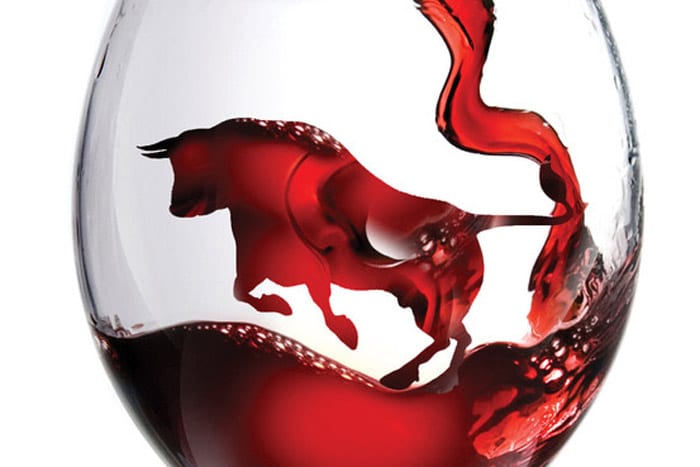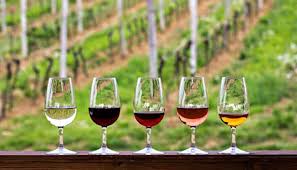Sometimes we just need an excuse to open up some really top shelf wines, the kind of wines that are treasured around the world and with unfortunate price tags to match.
Our most recent tasting event features the wines of Burgundy – a famous French wine region that lays claim to the spiritual home of Chardonnay and Pinot Noir. It is also synonymous with the concept of “Terroir” … the idea that a wine is the product of the environment that it comes from – especially the macro-climate, micro-climate and the soils that the grapes are grown in. With 100 different appellations and 400 different recognised the Burgundians have the individuality of specific influences on a wine down to a fine art. It’s frustrating to find the duality of Burgundy – on one hand the simplicity… after all there are just two grapes to worry about for fine wine in Burgundy – but on the other hand maddening in its complexity.

European wines need to be paired with food, so alongside our line-up of wines tasting platters included three imported French cheeses including a Brie stuffed with a truffle paste, chicken sautéed in a lemon-cream sauce, traditional (and homemade) French puff pastry gougeres, truffled Portobello mushrooms, medium-rare lamb rump, and of course the Burgundian delicacy Escargot.
We started our tasting with the “other white grape” of Burgundy – Aligote. A pale green grape grown in the Southern parts of Burgundy. Sometimes described as “the poor mans Chardonnay” – you would be hard pressed to find an example that meets the heady expectation and price point of ‘proper’ white Burgundy. Perhaps a bit of a mean assessment in the wider world of wine, but in the context of some superb wines in this lineup it rings true. Lighter and fresher, aromas of apple, citrus and stone fruit with a crisp finish. After a quick initial taste we doctor the glasses with a splash of another Burgundian product- Crème de Cassis.
The “Kir” is a now famous cocktail named for Felix Kir, a Catholic priest, underground resistance fighter, hotelier and long-time mayor of the city of Dijon. It’s alleged that the occupying German troops in WWII had cleaned out most of the red Burgundy worth drinking, and Kir came up with the idea of creating a cocktail to serve his guests in the absence of Pinot Noir combining two other local products. Our own patrons seemed to agree that the Kir was very palatable with the sweet twist of black currant.

Then we shifted on to the first of our white Burgundies. The first thing to learn about Burgundy is that the wines are labelled based on their origin rather than explicitly mentioning the grape variety. Montagny is a village in the Cote Chalonnaise – a sub-region of Burgundy just south of the Cote d’Or. The climate here is slightly warmer, encouraging a slightly riper style of wine. The example we taste is paired with robust oak, bringing a nice smoky twist paired with a lick of cream and a fine minerality but all the while driven by tart stone fruit.
Then on to one of the favourite wines of the evening – Meursault. This is one of the more acclaimed villages of the Cotes de Beaune, and rightly holds a reputation for some of the rounder and creamier of the Burgs. Make no mistake, this is never going to be the butter bomb of a classic Gisborne or California style of Chardonnay. It is elegant, aromatic, smooth with a slight oiliness in texture, again underpinned by the classic minerality of Burgundy.
Up another big step in price point to the most expensive wine of the evening- the famous Corton-Charlemagne. This hill was once owned by King Charlemagne himself. Apparently his wife was displeased with the red wine stains on the king’s beard, and insisted that the hill be replanted in white grapes! The wine is expectedly spectacular – but so it aught to be for over $300 per bottle. More of a ‘reductive’ style of winemaking compared to the Meursault, more powerful, with roasted nuts, fresh hay, citrus, honey, hints of truffle and more. At 5 years old it’s starting to open a little, and in another 5 years will be at its peak.

Onto the grape derided by Philip the Bold, the Duke of Burgundy who thoroughly derided Gammay as disloyal, and harmful to humans, even alleging it to infect people with serious diseases! While his medical analysis of Gammay proved to be far from the mark, he highlights an obsession with Burgundy wines- that over-cropping (allowing the vines to produce a large amount of fruit) tends to produce inferior wines. The Beaujolais region is famous for the Gammay grape, with the ‘Cru’ versions like the Cote de Brouilly a sporting a profusion of bright berry and plum flavours and soft tannins, far more drinkable than ‘Beaujolais Nouveau’ which is consumed in vast quantities each November – and then not again for the rest of the year.
Next in the lineup we compared to ‘Village’ level wines- Cotes de Beaune Villages and Cote de Nuits Villages. Coming from different geographical areas but at the same quality tier and same price point, the ‘Beaune’ showing more austere and earth, while the ‘Nuits’ showing more aromatic fruit and finer tannins. Curiously this was the opposite of what one would expect from these sub-regions, with the Cote de Nuits having a reputation for more full bodied and savoury wines compared to its southern neighbour.

Our last two wines we compared wines from the same village but different quality tiers. Givrey-Chambertin is one of the larger villages in the Cote de Nuits, and sporting a number of different ‘Lieu Dits’ and Grand Cru vineyards. We compared a wine from ‘La Justice’ on the eastern wide of the village from Domaine Antonin Guyon with the final wine of the evening – Domaine Drouhin-Laroze Latricieres Chambertin Grand Cru. The Grand cru being twice the price and with some extra bottle age was the clear preference of the two – but then again at $200 per bottle it better be good! Curious to see the Grand Cru coming into its own at 9 years old, though with 80% new oak that’s not unexpected, and will round out further with another few years to reach its peak.
So how did the wines show for our tasters? Kudos went to the top two White Burgundies over the reds, the Meursault and Corton-Charlemagne taking honours with the two Givrey-Chambertin reds tied for third place.



